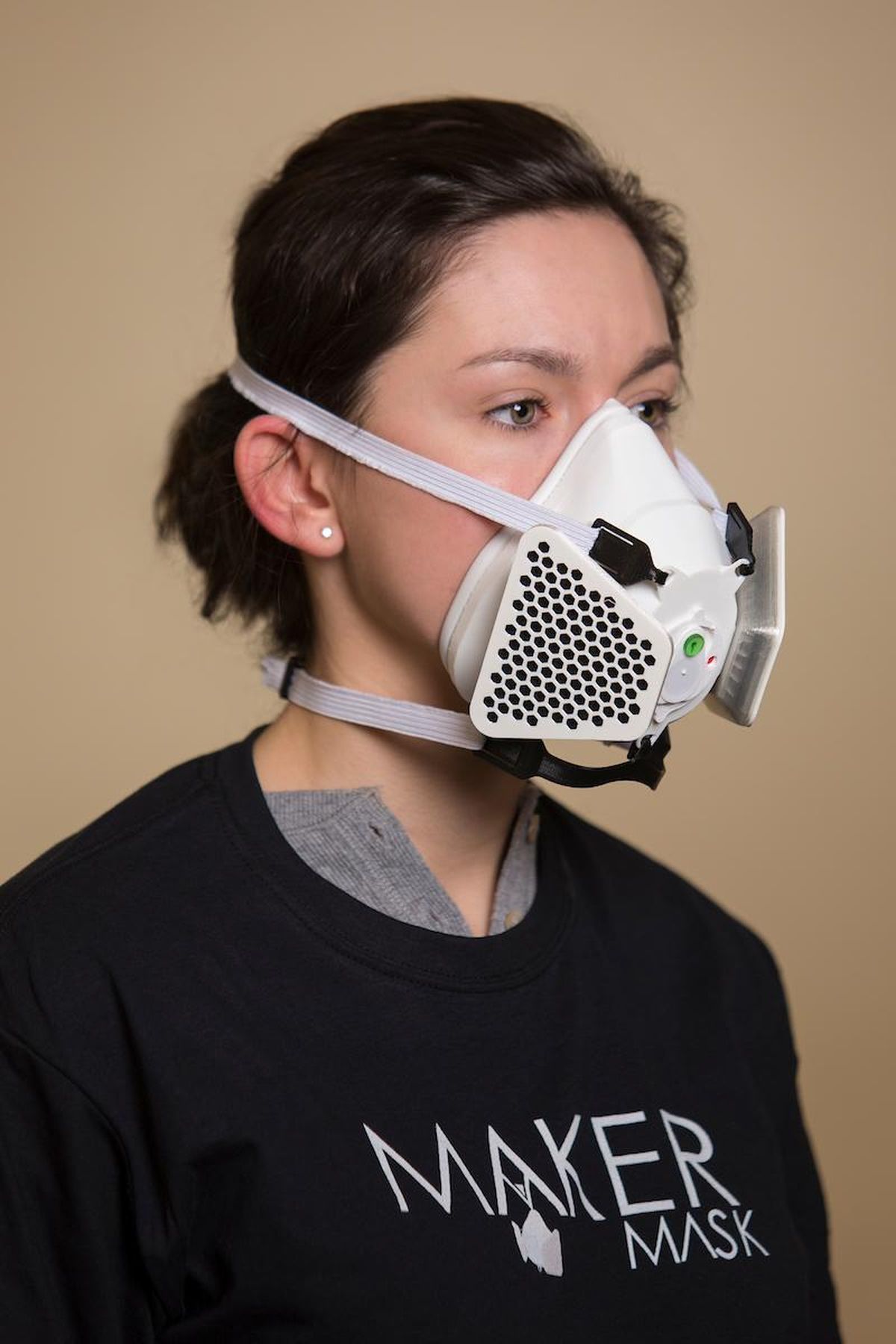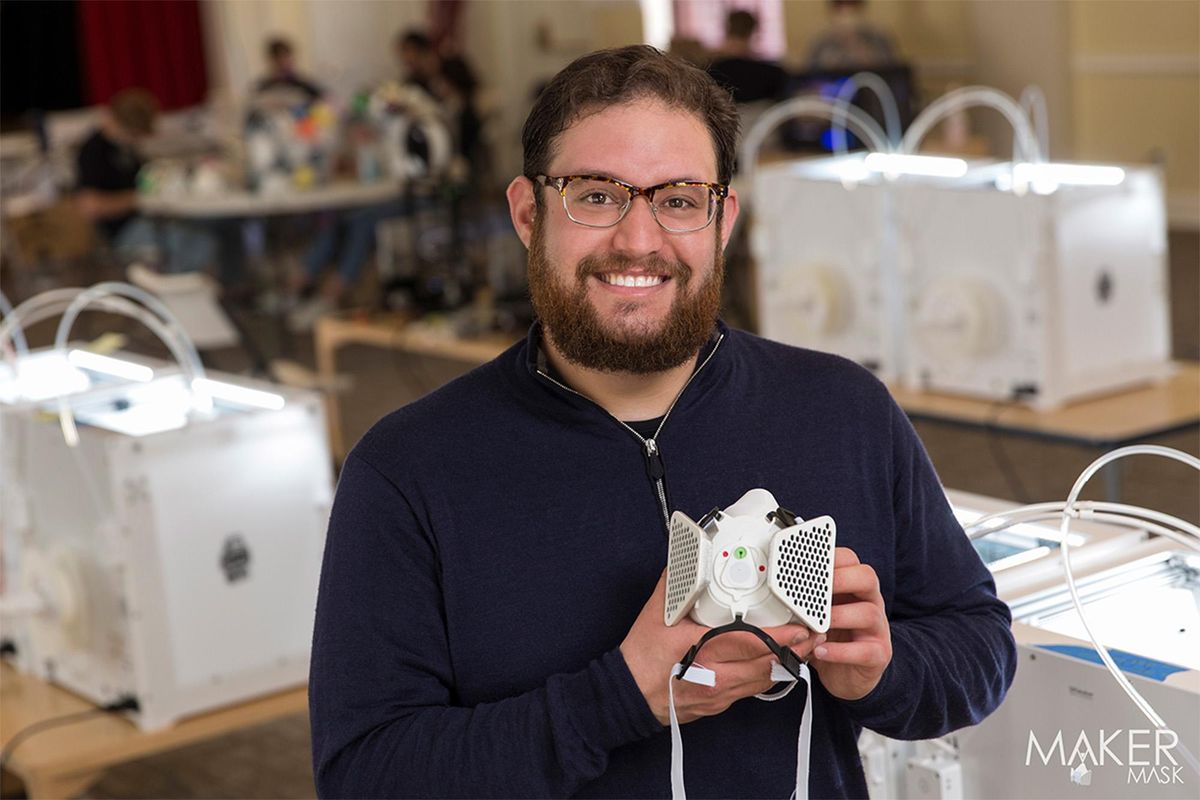As 3D printing of protective gear ramps up, a free mask designed in Seattle is the first of its kind to get federal approval
The Maker Mask. (Tribune News Service)
SEATTLE – Onetime Microsoft executive Jonathan Roberts knows that not all 3D-printed personal protective equipment being produced for the nation’s coronavirus response is created equal.
The past few weeks have thrust 3D printing technology into the spotlight as entrepreneurs and well-doers scramble to convert factories, shops and even home basements into makeshift assembly lines to produce personal protective equipment, or PPE, for embattled health care workers. Once best known for a Texas company’s nationwide distributing of blueprints for homemade handguns, 3D printing is now viewed as a potential lifesaver in the race to get masks, visors, shields and other PPE to those needing them most.
But amid concerns about the effectiveness of PPE made from 3D printers, Roberts used his connections at Seattle-based nonprofits and tech firms to fast-track a solution both with federal approval and broad distribution. Week before last, his Maker Mask – a free, 3D printable respirator mask that covers the mouth, as opposed to hooded versions – became the first of its kind to receive National Institutes of Health certification for COVID-19 response.
“It sends a signal to those people downloading it that this has gone through a vetting process,” Roberts said, adding the mask was approved for first responders such as firefighters, police, rescue workers and other emergency personnel but not for use in medical facilities. “That it’s a rigorous examination they’ve put it through and they’ve provided us feedback.. It’s a vetting that should provide some comfort to those that are printing it and handing it to first responders.”
Instructions for making the reusable masks had been downloaded more than 35,000 times in 117 countries as of Friday.
Demand for face shields, along with N95-masks and other PPE, has skyrocketed with the surge of patients infected with COVID-19, the illness caused by the novel coronavirus. The equipment being made on 3D printers nationwide, including by aerospace firms like Boeing and footwear and apparel companies, has mostly been meant as a temporary stopgap to quickly help overwhelmed hospital workers achieve minimal protection amid PPE shortages.
The Maker Mask – which the NIH also noted as an option for essential services employees in grocery stores or those making deliveries – has a replaceable HEPA filter and costs about $2 or $3 to build from readily available materials in fewer than four hours on a hobbyist-grade 3D machine. Roberts, team lead for the Maker Mask operation, has a small assembly line set up in a Seattle church where Rory Larson – Maker Mask creator and chief engineer – and a team of mostly college student volunteers produce about 100 devices daily on about two dozen printers.
Maker Mask’s website lets anyone around the globe register and download instructions, leaving contact information for Roberts and others to help them with supply chain contacts for materials within their immediate location. The NIH certification should enable broader distribution of the masks through government-run entities – including making them on 3D printers belonging to state colleges and universities – that might require official safety approval of any devices they help produce.
Roberts, a venture capitalist with Bellevue-based Ignition Partners and co-founder of relationship-building nonprofit RPrime, said he isn’t trying to disparage other attempts at 3D printing of devices the NIH hasn’t approved and saluted the entrepreneurial spirit behind them.
Adidas announced Wednesday that 3D printers ordinarily used to make shoes will now help build 18,000 face shields per week for medical professionals. That came a day after Nike announced it had developed face shields with Oregon Health & Science University and would start mass producing them in unspecified numbers. Under Armour had already announced plans to make more than 500,000 masks and assemble and distribute more than 1,000 face shields made from 3D printers, while Brooks Brothers plans to make 150,000 masks a day and New Balance about 100,000 masks weekly.
Several local businesses are also engaged in making PPE from 3D printers.
They include Ferndale-based Superfeet, a maker of custom shoe insoles that has repurposed its HP Multi Jet Fusion 3D printers to make 40,000 PAPR respirator hoods for local hospitals; it has made 4,000 so far. Superfeet president and CEO John Rauvola said the mask was designed in consultation with Peace Health of Bellingham, which had a dire need for the equipment.
“Right now, we’re sold primarily through retail outlets, and with retail being shut down we pivoted very, very quickly to produce these masks based on local need and connections that we have,” he said.
Rauvola said “it isn’t necessarily easy” to start making the hoods on the fly, but he got help from his HP support team.
Peace Health brought him a sample of what they needed on a Saturday, a 3D design was ready by Monday, and the first prototypes rolled off the assembly line a day later. Within a week, following some modifications, a final version was being made.
The hood design had already been long ago approved by regulators so – unlike the new Maker Mask – the company was told there was no need to recertify the parts his company is printing for the respirator devices.
Blue Origin, an aerospace venture launched by Amazon-founder Jeff Bezos, is printing about 100 plastic visors a day at its Kent factory and shipping them to its Statasys supply partner to distribute to hospitals nationwide. The visors are used to hold protective face shields in place.
Zeva Aero, a Tacoma startup, is also using 3D printers to make reusable hospital face masks.
The Food and Drug Administration (FDA) issued new guidelines last month for 3D printing of medical equipment and cautioned that PPE made from printers won’t always be as safe as those from traditional production methods.
“3D-printed PPE are unlikely to provide the same fluid barrier and air filtration protection as FDA-cleared surgical masks and N95 respirators,” the FDA said.
The FDA is part of a federal COVID-19 response task force, along with the NIH and Veterans Administration. Roberts’ contacts in the VA connected him with the other two agencies to work out Maker Mask approval. It required adding an additional outgoing air filter, so that any first responder carrying the virus couldn’t unknowingly expose it to somebody else.
The NIH stopped short of granting the device medical approval, saying the open-sourcing of it online means medical-grade quality controls can’t be ensured throughout the production process. But Maker Mask is being tested by Dr. Xuan Qin at Seattle Children’s Hospital – which allowed laboratory technicians to use them while processing samples – and she has voiced support for the device on the nonprofit’s website.
Larson, the Maker Mask creator, is a rapid prototyping expert with 10 years of experience in engineering. He said he came up with the design overnight after being approached for help by a friend in the PPE industry. He said the bigger challenges involved achieving optimal 3D print speeds by “playing to the weaknesses and strengths” of the software and his familiarity with it.
“It’s hard to design a model that is functional and large but also very quick,” he said. “So, there’s just a few tricks and tips that you’ve got to have.”

